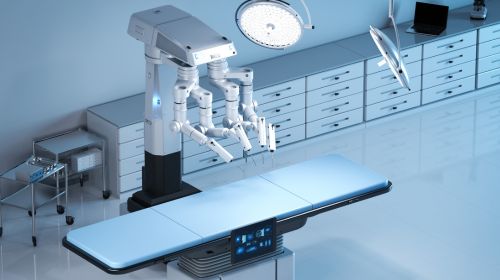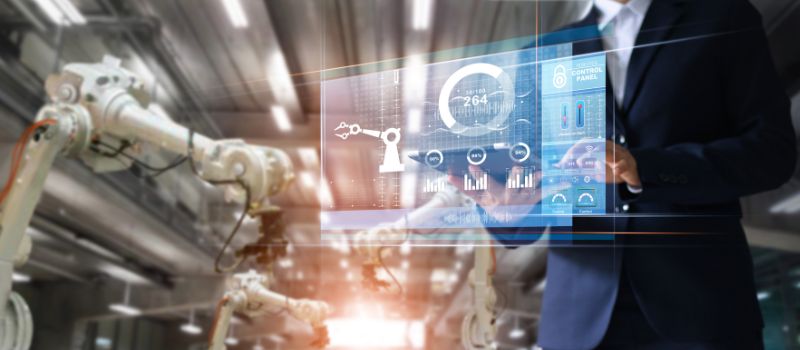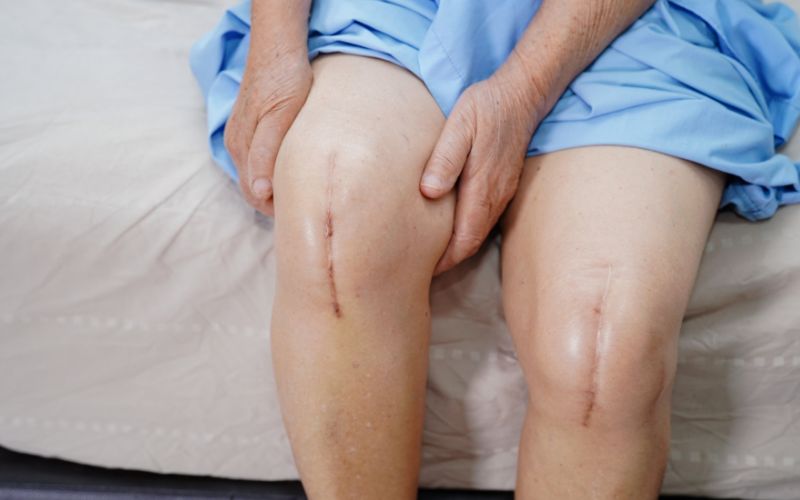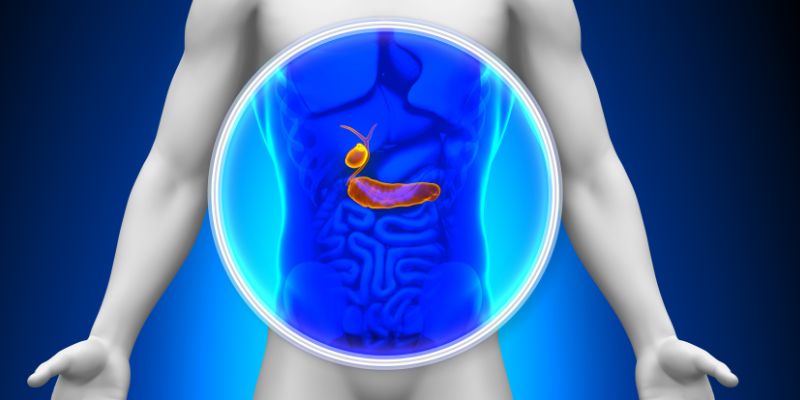Without a doubt, the introduction of robotic surgical techniques marked the beginning of a revolutionary era in the field of medical interventions. The future of healthcare appears bright as we witness pioneering robotic procedures, most notably in hernia, knee, and gallbladder operations. As technology advances, intrusive operations may one day be a thing of the past, replaced with more targeted and effective robotic interventions.
Evolution of Robotic Surgery
Advanced technical entities, especially robots, have had a profound impact on the field of medical surgery. This change has shaped the landscape of contemporary surgery by improving surgical results and decreasing postoperative complications.
Foundational Steps Towards Advanced Surgical Automatons
Robotic surgery first appeared as a means to overcome inherent human shortcomings. Prototypes developed to improve surgeons’ dexterity and reliability. Time and refinement brought increased elegance and sophistication to these primitive devices, laying a solid groundwork for the complex robots we see today.
Diverse Medical Areas Embracing Robotic Intervention
Robots have established themselves in a variety of medical specialities. Robots, for example, guarantee increased precision in bone alignments in orthopaedics. Meanwhile, in gynaecology, robots have been used to help with complex treatments. Due to their unrivalled precision, robots are increasingly being used in even the most complex cardiovascular treatments. The widespread use of robots in surgery demonstrates not just their effectiveness but also the breadth of their applications. Constantly penetrating new areas of medicine, they are a shining example of how modern science and practice can work together to improve care for patients.
Robotic Hernia Surgery and Its Novelty
Improved results and lessened postoperative discomfort are just the beginning of what we may expect from the integration of cutting-edge technology with time-tested surgical concepts made possible by robotic intervention in hernia surgery.
Traditional Hernia Repair versus Robot-assisted Techniques
In the past, hernia repairs generally required lengthy incisions and laborious suturing. While effective, these techniques required extensive postoperative care and healing time. In sharp contrast, hernia treatments performed with a robot expand the surgeon’s field of view, allowing for pinpoint accuracy.
Surgeons, aided by robots, can perform delicate procedures through tiny incisions with minimal damage to surrounding tissue. As a result, patients have shorter recovery times, less discomfort, and better cosmetic outcomes. This comparison between robotic and conventional methods demonstrates the revolutionary power of robots to alter the face of surgery.
Notable Benefits and Outcomes of Robot-driven Procedures
The technological marvels of today’s robot-assisted operations provide numerous benefits over traditional methods. Most notably, the increased dexterity and precision that robots give surgeons greatly reduces the likelihood of complications during surgery. These robots provide an unrivalled level of clarity in comparison to standard methods because of their high-definition lenses.
In addition, their dexterous arms perform complex motions, frequently in tight quarters that would be difficult for human hands. Patients benefit from this as well, with smaller scars, shorter hospital stays, and quicker recoveries. Initial costs may be high, but the benefits to patients and healthcare providers in the long run are clear evidence of the value of robot-assisted surgery.
A Glimpse into Robotic Knee Replacement Surgery
The introduction of robotics has led to major improvements in knee replacement, a pivotal point in orthopaedics. The convergence of technology and medical knowledge promises revolutionary improvements in patient care as we continue along this path of innovation.
How Automatons Have Transformed Orthopedic Interventions
In the past, the precision needed for orthopaedic operations like knee replacements was difficult for humans to attain consistently. With the advent of robotics, precision has taken on a whole new meaning. Since they can now calibrate, measure, and carry out tasks with pinpoint precision, they have significantly decreased the room for error. Robots can accurately measure bone density, record joint angles, and perform precise incisions.
This level of accuracy paves the path for prosthesis implantation that closely matches natural biomechanics, giving patients the feeling of mobility they had before their illness. There is no denying the increased success rates and better quality of life after surgery brought on by the robotic renaissance in orthopaedics.
Patient Recovery: A Comparison between Traditional and Robotic Surgeries
When comparing the results of conventional procedures to those performed by robots, significant disparities emerge in the realm of patient recovery. Although tried and true, conventional approaches frequently necessitate more extensive cuts, which in turn increase recovery times and lengthen hospital stays. Robotic procedures, on the other hand, are less intrusive and promote faster wound healing.
Patients experience less pain and require fewer analgesics when there is less tissue stress. In addition, because of their accuracy, robotic interventions reduce the risk and speed up recovery time. Therefore, patients who undergo robotic treatments typically experience shorter recovery times and higher quality of life. The rise of robotic surgery has led to significant improvements in the postoperative period for patients.
Rise of Robotic Gallbladder Surgery
Gallbladder removal is only one example of how robotic surgical expertise and pinpoint accuracy have ushered in a new age in the surgical field.
Paradigm Shift: From Laparoscopic to Robot-assisted Cholecystectomy
When it comes to removing the gallbladder, laparoscopic cholecystectomy using camera-guided equipment through small incisions was considered the gold standard. Although groundbreaking at the time, this method has been further perfected with the advent of robotics. The surgical field of view and the surgeon’s range of motion are both improved with robot-assisted cholecystectomy.
These robots are able to expertly manoeuvre around the gallbladder, decreasing the likelihood of bile duct damage. In addition, they can change and respond in real-time, which improves the efficiency with which gallstones or gallbladder can be removed. This shift from laparoscopic to robot-driven techniques is a watershed moment in the history of gallbladder removal.
Augmented Precision and Reduced Hospital Stays: A Result of Advanced Tech
Precision robotic devices have revolutionized surgical practice and patient outcomes in recent years. Their complex construction and high-definition optics make it possible to perform delicate dissections and suturing with minimal damage to surrounding tissue. The surgical success rate is increased, and postoperative problems are decreased when this level of precision is used. Because of this, hospital stays have dropped significantly. Patients who undergo robot-assisted operations typically experience less discomfort and are able to walk without assistance from medical staff more quickly after the procedure is over.
Clearly, the combination of cutting-edge tools and seasoned surgeons has done more than just redefine operating success; it has also altered the postoperative recovery environment.
Conclusion
Robotic surgery’s rise to prominence heralds a renaissance in therapeutic procedures. The advantages become more apparent as we compare conventional practices with these cutting-edge technologies. Because of their unparalleled accuracy and versatility, robots herald a future in which surgical procedures are less risky, patients recover more quickly, and treatment results are dramatically improved.











